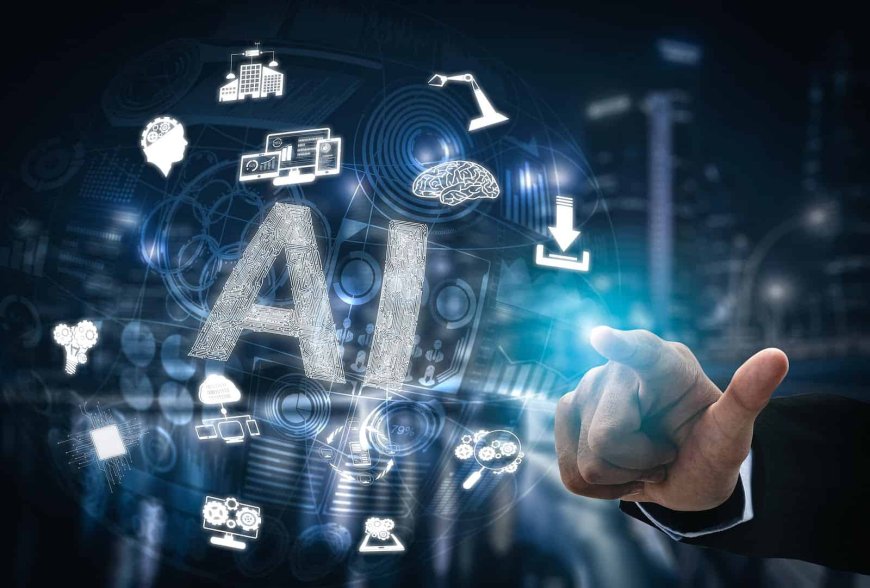Enhancing VR with AI Development Services and Generative AI

In recent years, the landscape of virtual reality has grown beyond gaming to unveil a new frontier of possibilities in entertainment, education, healthcare, and many more. But the more VR grows in sophistication, the greater the demand will rise for more immersive, realistic experiences. That is where AI development services come into play. By integrating AI, especially generative AI solutions, into Virtual Reality, experiences can be made more realistic and interactive than ever before, changing the paradigm in which people interact with virtual worlds.
AI in Virtual Reality
Virtual reality is a fully immersive way of placing users inside a completely other environment. Traditional VR, however, relies on so many pre-programmed elements that can feel static and predictable after some time. AI development services are changing this with the introduction of real-time dynamic elements, adapting to the user's actions and making the virtual feel alive and responsive.
For instance, AI can interpret the performance and preferences of the user, create personalized responses by in-game characters, change the virtual surroundings, and even create exclusive plotlines based on the individual's choice. These features enhance not only the quality of the overall experience but also make VR more personalized, interactive, and life-like.
Generative AI: The Next Frontier in VR Innovation
Of all the AI technologies, generative AI solutions are leading in making improvements to VR. Generative AI refers to systems capable of generating new content images, videos, music, or even text based on existing data. This could be extremely powerful within a VR context, whereby extensive, detailed environments and dynamic interactions usually require a lot of time and resources.
Generative AI will help developers streamline the process of creating entire virtual worlds. While a person would need to create every small thing in a VR, generative AI can build huge, realistic landscapes or certain characters right away. It will make the process faster and cheaper but, more importantly, will offer infinite options to users who can explore worlds unique to their experience.
Personalized and Adaptive VR Experience
The most important feature, and hence the advantage, of a combination of AI development services with VR is adaptive environments. In usual surroundings using VR, the users are bound to walk around and see things that were pre-designed and do not change whatever they did to it. With AI, however, virtual worlds can evolve and adjust according to user behavior. The AI dynamically changes the environment if one hangs around one area of the game. This can give the players more tasks, different storylines, or even change landscapes to keep them busy.
Also, generative AI solutions can personalize these experiences with their analysis of user data. For example, AI might alter the colors, sounds, or challenges the user sees within a VR environment to make it even more personalized based on his preferences or prior actions, so every time he goes into that environment, it would be completely different for him. The greater the personal relevance an experience has, the higher the user satisfaction is, and this prolongs users' stay in an application.
The big problem is that VR developers have to invest an inordinate amount of time and effort into developing high-quality content. Whether it is designing 3-D models or crafting entire virtual worlds, this is an expensive and very time-consuming process. AI development services through the use of generative AI greatly reduce this burden.
Meanwhile, generative AI can automatically generate textures, models, and even whole environments while developers focus on their creative vision without getting bogged down in minutiae. For example, in a VR game, rather than having to model each tree or mountain in a forest by hand, generative AI can create naturalistic, diverse landscapes in a matter of minutes. By doing so, it saves time and allows for detail and complexity that is hardly achievable by a human artist alone.worldnewsfox
Generative AI can also be used for the creation of dynamic NPCs with unique behaviors, dialogues, and interactions; no two users would ever have the same experience. This leads to a host of new possibilities regarding story-driven VR experiences where AI generates new plotlines or dialogues depending on user choices, thus fully engaging in the interactive process of telling a story.
Enhancing Training and Simulation
Beyond this, AI-influenced virtual reality has continued to make big splashes in industries such as education, healthcare, and corporate employee training. Simulations in these industries will have more realistic learning requirements; for example, surgeons can work on perfecting tricky surgical procedures in a virtually safe world, or businesses can create a simulation of real-world scenarios to practice and train their employees.
These simulations can be taken to the next level with AI development services and generative AI solutions. AI will understand user performance and adjust the training exercises on the fly, offering either new challenges or honing in on exactly those areas where the user needs improvement. For example, as in a medical training simulation, if the trainee does poorly in some procedure, the AI would alter the scenario, giving him more practice at it, thus making the learning effective and customized.
Overcoming Challenges with AI in VR
Where the integration of AI and VR presents an enormous number of advantages, there are challenges, too. For instance, one of the big hurdles is ensuring that the AI-generated content stays cohesive and does not break immersion. Such is the case where generative AI solutions make it possible to create diverse environments; there is a chance of generating content that will feel disjointed or incoherent with the broader experience.
Overcoming this requires AI development services to make the integration of AI-generated elements with the ongoing narrative or visual style of a VR environment seamless. Ensuring that generative AI solutions follow the overall design and artistic direction is crucial for maintaining immersion.
While VR itself is an intensive technology, incorporating AI algorithms raises the stakes for hardware. Another challenge involves a degree of computational power required to make real-time AI-driven adaptations in VR. With continuous developments in both AI and cloud computing, the challenges are becoming increasingly surmountable, and bright times are ahead for AI-powered VR experiences.
The Future of VR and AI Collaboration
With every evolution of AI technologies, the partnership between AI and VR is expected to get even better. AI development services will continue to be key drivers for defining next-generation VR experiences that feel more immersive, personalized, and dynamic. Particular attention will go to generative AI solutions, which will be one of the leading forces in this evolution and will open endless avenues with content creation and user interactions.
In less than a decade, AI will take the next step forward into previously unimagined uses for VR beyond entertainment. Instead, it is going to reinvent industries such as healthcare and education, among others, that heavily rely on training. This capability for real-time adaptive responses and environments created by AI makes virtual reality more effective, interactive, and personalized.
Conclusion
Incorporating AI development services and generative AI solution development in virtual reality expands possibilities and redefines how experiences and interactions can be commonplace within digital environments. In VR, this opened personalization opportunities for adaptive training simulations, augmented interactive experiences, and enabling even VR to adapt better to surroundings. Coupled with ever-improving technologies, the future indeed looks bright for VR.
What's Your Reaction?
 Like
0
Like
0
 Dislike
0
Dislike
0
 Love
0
Love
0
 Funny
0
Funny
0
 Angry
0
Angry
0
 Sad
0
Sad
0
 Wow
0
Wow
0






















































